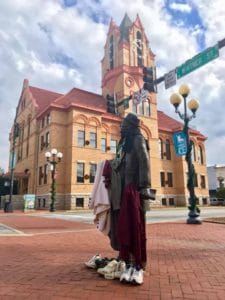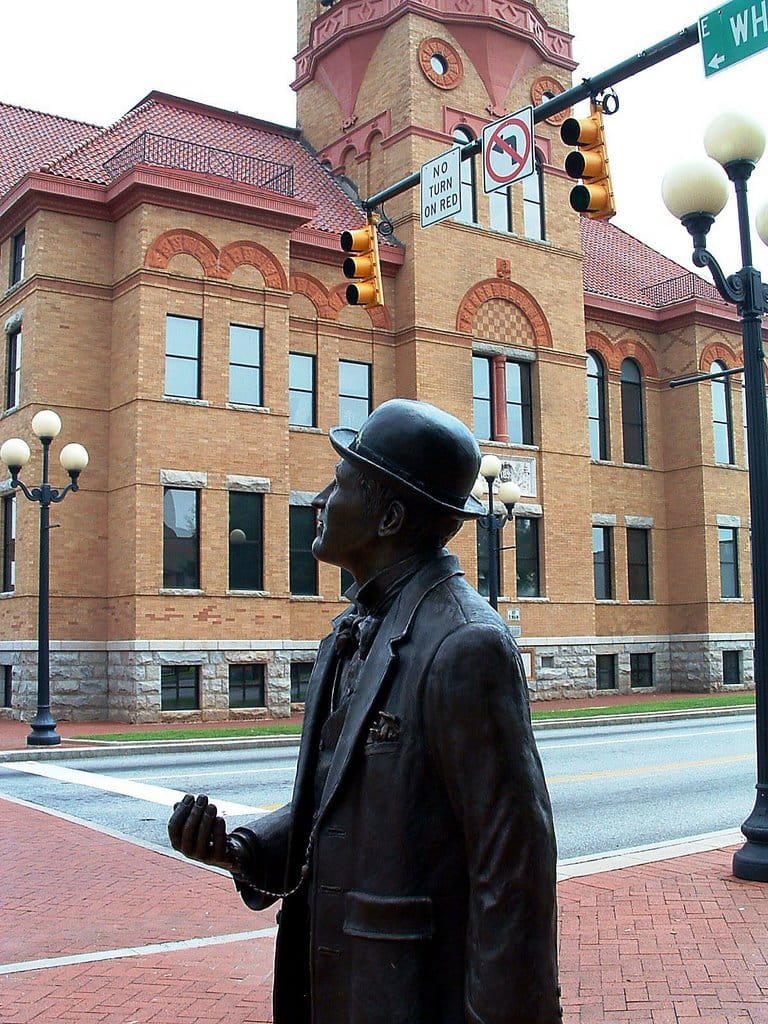Downtown Anderson, South Carolina, holds within its embrace a symbol of ingenuity, generosity, and the electrifying spirit of Mr. William Whitner. This iconic figure, immortalized in a statue, is a testament to a pivotal moment in history when a man’s vision brought light to the town and earned it the name “The Electric City.” Join us as we unravel the story behind the statue that pays homage to the man who powered up Anderson, literally and figuratively.
Mr. William Whitner, an Anderson native born in 1864, was not just an ordinary citizen but a visionary pioneer who played a crucial role in bringing electricity to the South. Whitner’s journey began with the development of the first hydroelectric plant. This groundbreaking achievement transmitted power over six miles from High Shoals on the Rocky River to downtown Anderson on May 1, 1895. This event marked the birth of “The Electric City” and forever etched Whitner’s name in the town’s history.
Whitner’s path to pioneering hydroelectric power wasn’t a straight line. After studying Civil Engineering at the University of South Carolina, he initially worked as a railroad engineer. However, fate intervened when he contracted typhoid fever, leading him to return home to Anderson to recuperate. In 1889, the city enlisted Whitner to build an electric plant and water system. Although he initially considered steam power, his attention quickly shifted to the more cost-effective and innovative hydropower.
In pursuit of his ambitious goal, Whitner sought the advice of none other than the legendary inventor Nicola Tesla. Tesla, known for contributing to alternating current (AC) electricity, provided invaluable insights. With Tesla’s advice, Whitner returned to Anderson in 1894 with plans for an AC-driven hydropower plant.
Less than a year later, the High Shoals Experiment succeeded, leading to the realization of the Portman Shoals Hydroelectric Station on the Seneca River, which was completed in 1897. This hydroelectric plant, transmitting electricity 11 miles, boasted the longest power line in the United States at that time. Anderson’s transformation into “The Electric City” was complete.
To commemorate the centennial anniversary of Duke Power, a sculpture by artist Zan Wells depicting Mr. Whitner was unveiled on October 12, 2004. Positioned in downtown Anderson, the statue captures Whitner peering up, watch in hand, symbolizing the anticipation of the street lights illuminating with the power his plant supplied.
Beyond its aesthetic appeal, the statue serves as a living legacy, reminding both residents and visitors of Anderson’s electrifying history. Whitner’s contributions not only illuminated the town but also paved the way for the development of the Catawba River Company, a forerunner of Duke Power. One heartwarming tradition associated with the statue is the practice of leaving coats, jackets, and other warm clothing during the winter months. Community members and visitors come together to drape these items over Mr. Whitner’s outstretched arm, creating an impromptu donation center for those in need.

The statue becomes a living symbol of care and support, as the garments are made available for the homeless to take and stay warm during the colder seasons.
As you stroll through downtown Anderson, take a moment to appreciate the statue of Mr. William Whitner. It stands not just as a tribute to a man who harnessed the power of “white fire” but as a beacon of inspiration for future generations. The Electric City owes its luminosity to Whitner’s vision, and the statue immortalizes the man who brought light to the heart of Anderson. As Anderson continues to evolve, the statue of Mr. Whitner remains a cherished landmark. It is a focal point for community gatherings and events and symbolizes the town’s commitment to kindness. The statue has become more than a monument – it is a living testament to the values that bind the community together. The values embodied by Mr. Whitner – empathy, generosity, and community engagement – continue to inspire residents to work together for the betterment of Anderson.






